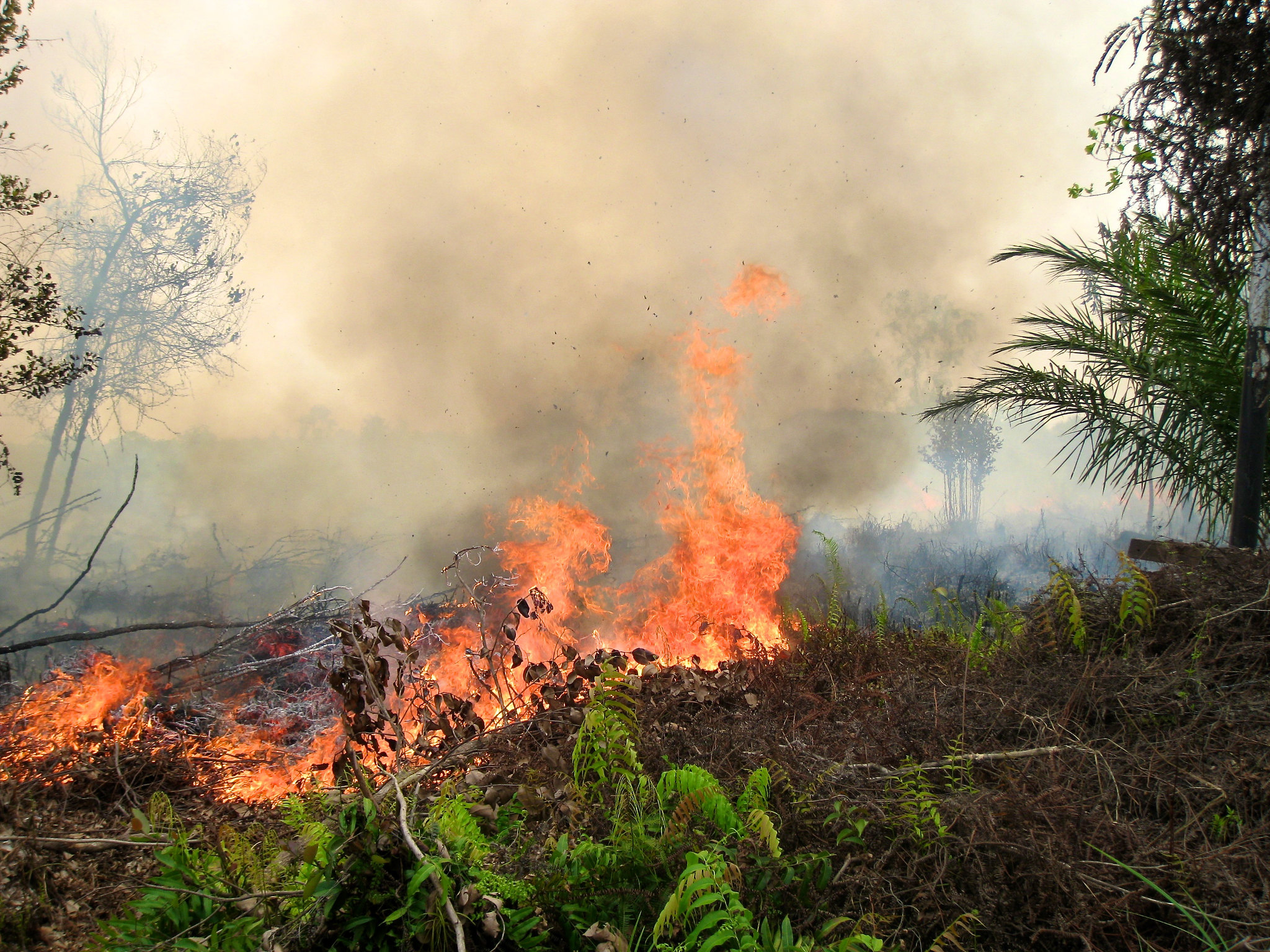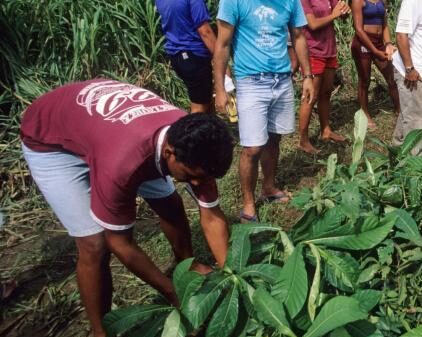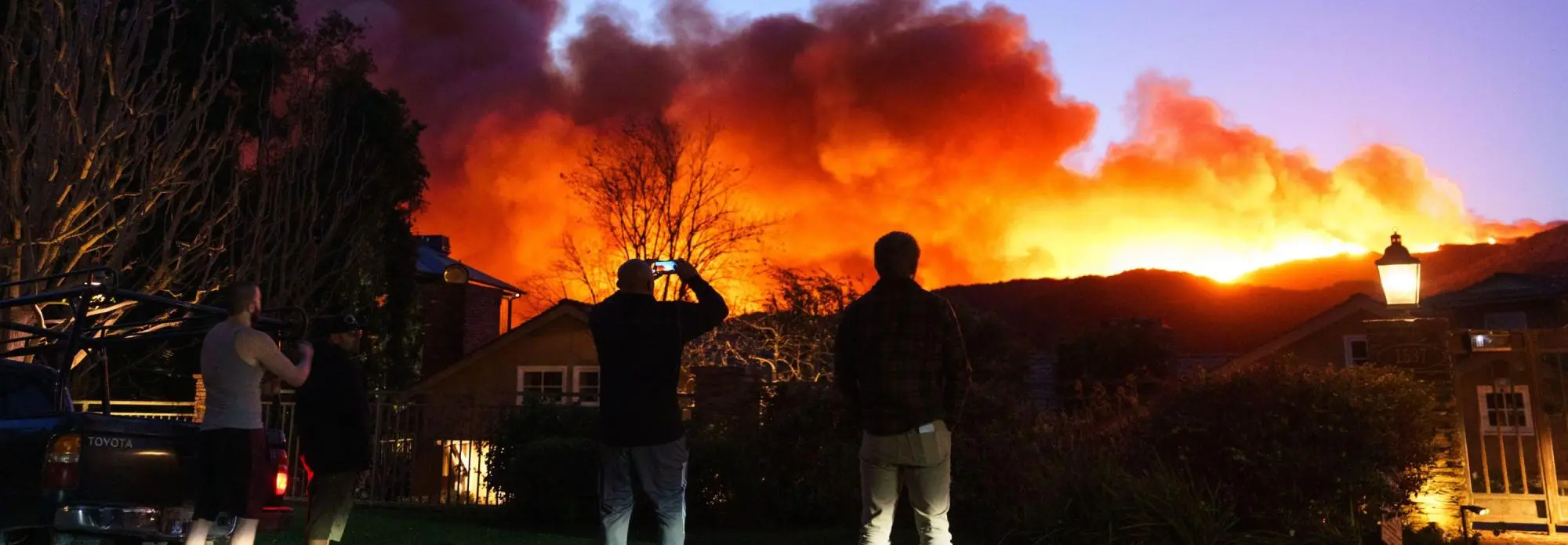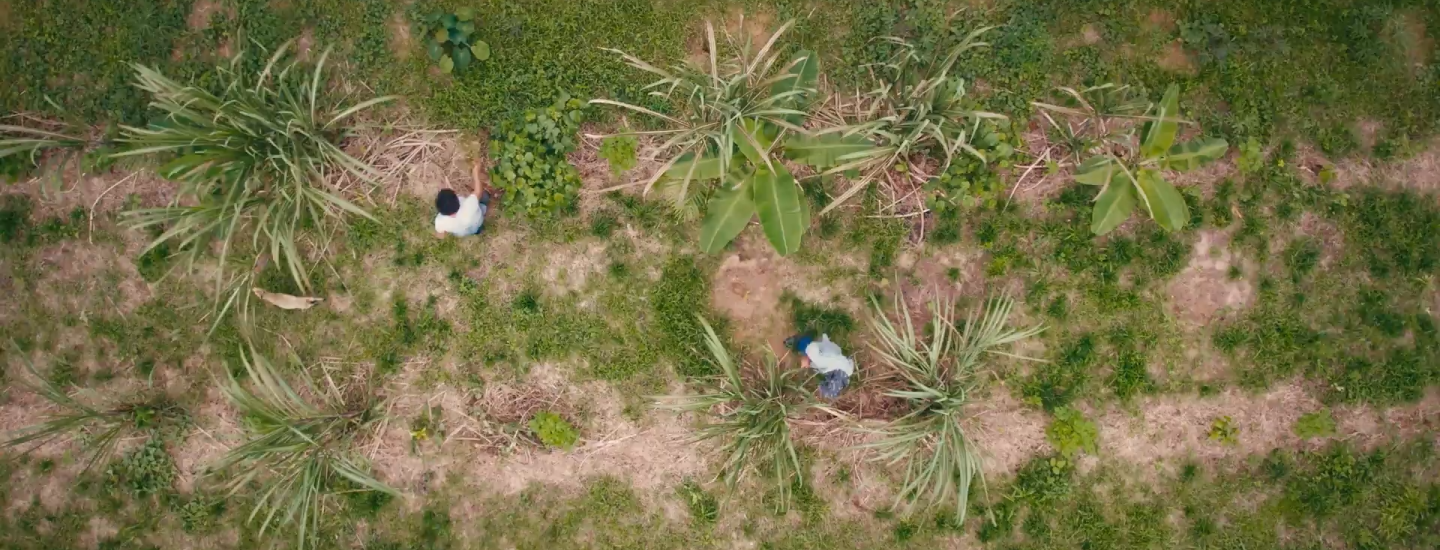Forest Loss Remained Stubbornly High in 2021

Fire in forest in Kalimantan, Indonesia. Photo by Rini Sulaiman / CIFOR
-Rini Sulaiman/Norwegian Embassy
The tropics lost 11.1 million hectares of tree cover in 2021, according to new data from the University of Maryland and available on Global Forest Watch.
Of particular concern are the 3.75 million hectares of loss that occurred within tropical primary rainforests — areas of critical importance for carbon storage and biodiversity — equivalent to a rate of 10 football pitches a minute. Tropical primary forest loss in 2021 resulted in 2.5 Gt of carbon dioxide emissions, equivalent to the annual fossil fuel emissions of India.
Tropical primary forest loss, 2002-2021
The rate of primary forest loss in the tropics has been stubbornly consistent over the last few years. Though the tropics lost 11% less primary forest in 2021 than in 2020, that followed a 12% increase from 2019 to 2020, mostly due to an increase in fire-related loss.
And it’s not just tropical forests that are of concern. Boreal forests — mainly those in Russia — experienced unprecedented tree cover loss in 2021, largely driven by fires.
These trends underscore just how much action it will take to achieve global zero-deforestation goals. Under the 2021 Glasgow Leader’s Declaration on Forests and Land Use, 141 countries committed to collectively “halt and reverse forest loss by 2030.” Realizing this commitment will require a consistent decline in forest loss every year for the rest of the decade — a decline that is not yet happening in the tropics as a whole. The exceptions are a select few countries, most notably Indonesia and Malaysia, where primary forest loss has declined significantly in recent years, and countries such Gabon and the Guyanas, which have lost 1% or less of their primary forests in the last two decades.
Top 10 countries for tropical primary forest loss in 2021
Here’s a deeper look at some of the trends in forest loss in 2021:
Indonesia reduced primary forest loss for the fifth straight year
The rate of primary forest loss in Indonesia continued to decline in 2021 for the fifth straight year, falling by 25% compared to 2020. Yet another year of decline is cause for celebration, and indicates that Indonesia is heading in the right direction to meet some of its climate commitments. Last year, Indonesia updated its national climate plan (NDC) with a commitment to reduce emissions in its forest and land-use sector such that it becomes a net carbon sink by 2030.
Indonesia primary forest loss, 2002-2021
The continued downward trend also indicates that corporate commitments and government actions are working. New research shows deforestation linked to oil palm is at a 20-year low. No Deforestation, No Peat and No Exploitation (NDPE) commitments now cover 83% of palm oil refining capacity in Indonesia and Malaysia, and over 80% of the pulp and paper industry in Indonesia. Furthermore, the Roundtable on Sustainable Palm Oil tightened sustainable certification requirements in 2018 to prohibit deforestation and peatland clearing.
The decline also reflects efforts by the Indonesian government to reduce forest loss. The Ministry of Environment and Forestry increased fire monitoring and prevention efforts after widespread forest and peat fires in 2015. The government also issued a permanent moratorium on primary forest and peatland conversion, and expanded the mandate of the Peat Restoration Agency to include protection and restoration of mangroves as well as peatlands. Mangroves are important ecosystems for biodiversity and for regulating the impacts of extreme weather.
While Indonesia has reason to celebrate a fifth straight year of declining forest loss, it will need to reinforce forest protection measures to sustain this positive trend. Oil palm prices, which tend to correlate with oil palm-linked deforestation, started to climb in 2020 and are now at a 40-year high. The temporary freeze on permits for new oil palm plantations was not renewed last year, opening the door for plantation expansion in response to increasing prices.
Additionally, the Indonesian government recently revoked hundreds of permits for logging operations, plantations and mining activities in forested areas. If these areas are redistributed to local and Indigenous communities for community-based forest management, the revocations could prove to be an important milestone on the road to stronger recognition of customary rights and forest protection. However, there is also a possibility that these areas are reallocated to companies and quickly cleared, leading to more forest loss.
Finally, there is a risk that Indonesia’s efforts to jumpstart economic recovery from the COVID-19 pandemic may yet take a toll on its forests.
New deforestation frontiers emerge in the Brazilian Amazon
As the country with the most primary rainforest to begin with, Brazil consistently tops the list for most primary forest loss. Over 40% of tropical primary forest loss in 2021 occurred in Brazil, a total of 1.5 million hectares.
Brazil primary forest loss, 2002-2021
The rate of primary forest loss in Brazil has been persistently high the past several years. Loss related to fires has fluctuated depending on the level of out-of-control forest fires, most recently with a spike in 2020 in the Amazon and the Pantanal. Meanwhile, non-fire losses, which in Brazil are most often associated with agricultural expansion, increased 9% from 2020 to 2021. This finding is consistent with Brazil’s official monitoring system, PRODES (read more about the University of Maryland and PRODES data sets here), which found that 2021 had the highest rate of clear-cut deforestation in the Amazon since 2006, when measures were put in place to drastically reduce deforestation.
The western Brazilian Amazon in particular faced an intensification of primary forest loss, with its key states experiencing greater than 25% increases in non-fire loss from 2020 to 2021. This part of the Amazon has several areas of new primary forest loss hotspots, meaning places that experienced a statistically significant appearance of new loss in 2021. Many of the new hotspots encompass large-scale clearings — likely for cattle pastures — along existing roads. Some of these roads, like the BR-319 that runs north to south in Amazonas, are slated for paving and improvements, which has already resulted in an uptick in deforestation.
Primary forest loss in Brazil is especially concerning given new evidence that the Amazon rainforest is losing resilience and may be closer to a tipping point than previously thought, where the interactions between deforestation, climate change and fires lead to irreversible transformation of massive areas of the Amazon to a savannah. This would not only result in huge amounts of biodiversity loss and carbon emissions, but also disrupt precipitation patterns critical for agricultural production.
Bolivia experienced record-high primary forest loss due to fires and large-scale agriculture
Primary forest loss in Bolivia reached its highest level on record in 2021 at 291 thousand hectares, surpassing Indonesia once again to have the third-most primary forest loss among tropical countries.
Bolivia primary forest loss, 2002-2021
The past three years have seen consistently high rates of loss in Bolivia, with fires accounting for over a third of the loss each year. As in the previous two years, 2021 saw significant burning of primary forests within protected areas. Fires in Bolivia are almost always set by humans as part of efforts to clear land, but spread out of control due to dry, hot weather exacerbated by climate change. The majority of forest fires in 2021 burned in the department of Santa Cruz, though the government there is working to restore the affected areas.
Santa Cruz is also the country’s epicenter of large-scale agriculture like soy and cattle ranching, which accounts for much of the non-fire primary forest loss in 2021. Though Bolivia has much less soy production than neighboring countries, most of its soy expansion has come at the expense of forests.
Agriculture, energy demands and logging drove primary forest loss in Congo Basin forests
As in years past, persistent high rates of primary forest loss continued in the Democratic Republic of the Congo (DRC). DRC lost nearly half a million hectares of primary forest in 2021 due to the expansion of small-scale agriculture and harvesting trees to meet energy demands.
DRC’s large forest tracts are a globally important carbon sink, with vast expanses of carbon-rich peatlands. Big changes are needed to curb this persistent high rate of loss, including development pathways that do not involve agricultural expansion into primary forests and providing urban and rural communities with access to affordable clean energy to reduce reliance on charcoal and other forms of wood energy.
Despite persistent high rates of loss in DRC, bright spots of hope can be found in the Congo Basin. Both Gabon and the Republic of Congo experienced two years of declining primary forest loss. Both are recognized as high forest, low deforestation (HFLD) countries with promising developments on the horizon for their forests: Gabon became the first African country to receive payment for reducing carbon emissions and deforestation, and the Republic of Congo recently passed a law allowing Indigenous Peoples and local communities (IPLCs) to legally hold and manage — and thereby protect — their forests from unwanted commercial activities.
Climate change wreaked havoc on northern forests
Outside of the tropics, boreal forests experienced the highest rates of tree cover loss in 2021. While tree cover loss in boreal forests rarely results in permanent deforestation, the rate of loss reached unprecedented levels in 2021, increasing 29% over 2020. These high latitude, evergreen forests are increasingly under threat from climate change, with hotter, drier conditions leading to increased fires and insect damage.
Tree cover loss by climate domain
An unprecedented fire season in Russia drove much of this increase. Russia experienced the worst fire season since record-keeping began in 2001, with more than 6.5 million hectares of tree cover loss in 2021. While fires are a natural part of boreal forest ecosystems, larger, more intense fires are worrying. Hotter, drier weather related to climate change has led to fire-prone conditions, drier peatlands and melted permafrost. Siberia’s vast peatland area — the largest in the world — stores massive amounts of carbon, which is released into the atmosphere when peat dries up. Melting permafrost also releases stored carbon and methane. These conditions may represent a new normal, impacting people living in Siberia and creating a feedback loop in which increasing fires and carbon emissions reinforce each other and lead to worsening conditions.
Russia tree cover loss, 2001-2021
What’s needed to achieve commitments to protect forests?
Though forest loss will need to decline much faster to meet 2030 zero-deforestation targets, there are reasons for hope. Indonesia’s rapid decrease in primary forest loss should be celebrated as a massive achievement that didn’t seem likely just five years ago.
Achieving similar declines around the world won’t be easy. Indonesia and Malaysia will need to maintain momentum on protecting forests amid soaring oil palm prices; Brazil and other countries in the Amazon will need to tamp down on new deforestation hotspots; Congo Basin countries will need to ensure paths for development that safeguard forests; and Russia and other northern countries will need to combat the impacts of climate change on forests.
Thanks to the Glasgow Declaration, the world has a common goal to protect forests, and funding to back it up. The pathways to achieving these commitments are challenging but clear. We will continue to monitor, analyze and report on humanity’s progress.
Read more about the pathways to end tropical deforestation.
We would like to acknowledge Svetlana Turubanova and Peter Potapov from the University of Maryland, who updated the tree cover loss data, and Sasha Tyukavina from the University of Maryland, who updated the tree cover loss due to fire data.


